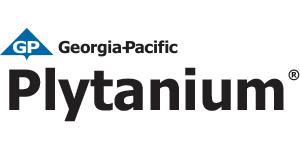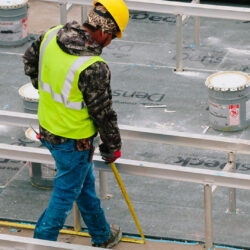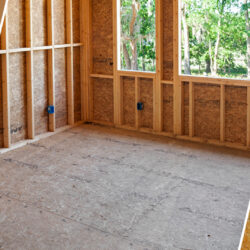Examining how the COVID-19 pandemic has impacted the home improvement and renovation space, and what these changes mean for the future of home building.

When we were instructed to “shelter in place” in early 2020, we initially envisioned it lasting for a few weeks. More than nine months later, most of us have come to the realization that our makeshift modifications resulting from remote working and limited time outside the home may require more permanent solutions. Because of the countless hours spent at home, many homeowners have been inspired to reimagine how their spaces could better function for them. This created a widespread need for home renovations and improvements, resulting in quick-turn projects and backed-up schedules for home builders.
Three areas homeowners focused on for improvements and renovations dealt with educational and professional development, physical health, and mental health. We’re examining what these changes have looked like, what they mean for home builders today, and how it will translate to a post-pandemic world.
Educational and Professional Development
What Changed
Homes that once functioned primarily as places to sleep, eat, and get ready for work and school now act as safe havens. Beyond providing for our pre-COVID comforts, they must now support new virtual work-and-learn models that extend well beyond opening a laptop on the kitchen table. Homeowners and home builders have been motivated to come up with innovative ways to expand the role of the home, especially when it comes to serving families that need a better balance between common and private areas. Investments into homes, like expansions and additions, shifted from luxuries to must-haves. Some homeowners turned to outdoor sheds or other unused areas to create schools, offices, and separate quiet areas for learning and working. One industrious family even went as far as pivoting their home building plans to construct a small school in their basement, complete with its own logo, to support not just their own children, but also their neighbors in need.
What’s Next
It will be essential to continue to be mindful of these evolving needs, and residential builds of the future must incorporate space to serve remote work-and-learn requirements. In a post-pandemic world, features like built-in desk areas, more storage, soundproof walls, and convertible office space are a few modifications that have gained popularity in supporting educational and professional environments at home.
Physical Health
What Changed
If physical health wasn’t necessarily a priority a few months ago, it vaulted to the top of the list in 2020. Exercise equipment became as popular as toilet paper, and loungewear served double duty as workout gear. As the weeks turned to months, many homeowners considered permanent solutions for exercising, like small home gyms hidden in master closets. Beyond physical activity, the way we eat also changed. While kitchen renovations have always been popular projects, they jumped 40% in demand this summer compared to a year ago. With restaurants functioning at lower capacity or takeout only, the kitchen became even more central to accommodating our current state.
What’s Next
Home builders should be prepared to work with homeowners to find creative approaches to serve their evolving lifestyles. Plus, the acceleration of smart construction could completely transform home building. Upgrades such as touchless faucets, mirrors that detect body temperature, air and water filtration systems, disease-resistant surfaces, and germ-resistant paints are all features to consider when addressing physical health needs in future home builds.
Mental Health
What Changed
Like physical health, mental health became a concern as managing anxiety was just as important as managing the changes in our everyday routines. With residences serving as gyms, offices, and schools (sometimes simultaneously), homeowners had to work harder to maintain the comforts that home typically brings. Viewing backyards as sanctuaries and an escape from everyday life, the pool industry saw a major jump, with pool sales internationally up 54% year to date. Unused patios were transformed into areas for relaxation and escape from the stress of our health crisis. Security and privacy also experienced a dramatic increase, with fence installation and repairs up 166%.
What’s Next
Going forward, builders should anticipate homeowners paying more attention to how they can maximize all areas of their homes to ensure their mental health is supported. If homeowners are going to be spending more time at home, they want to be able to enjoy it to the fullest. Among the increased comforts of home, expect more backyard and basement spaces, equipped with retreat-like features such as pools and saunas, to become higher on the priority list.
While we know our COVID-related limitations will eventually be lifted, it’s likely that life as we knew it will not look entirely as it was. Homeowners’ renewed focus on the utility of the home is unlikely to wane. Beyond changes in how homes must function, sustained momentum from a booming housing market also helped to create an increase in renovations and more elaborate design choices. Knowing all of this, home builders should be ready for continued interest in the areas of renovation and remodeling. This includes being flexible and paying close attention to design trends that convey substance as much as style. Because our “new normal” might just be here to stay. To maintain a continued pulse on home building industry trends, keep visiting BuildGP.com/blog for future insights.









